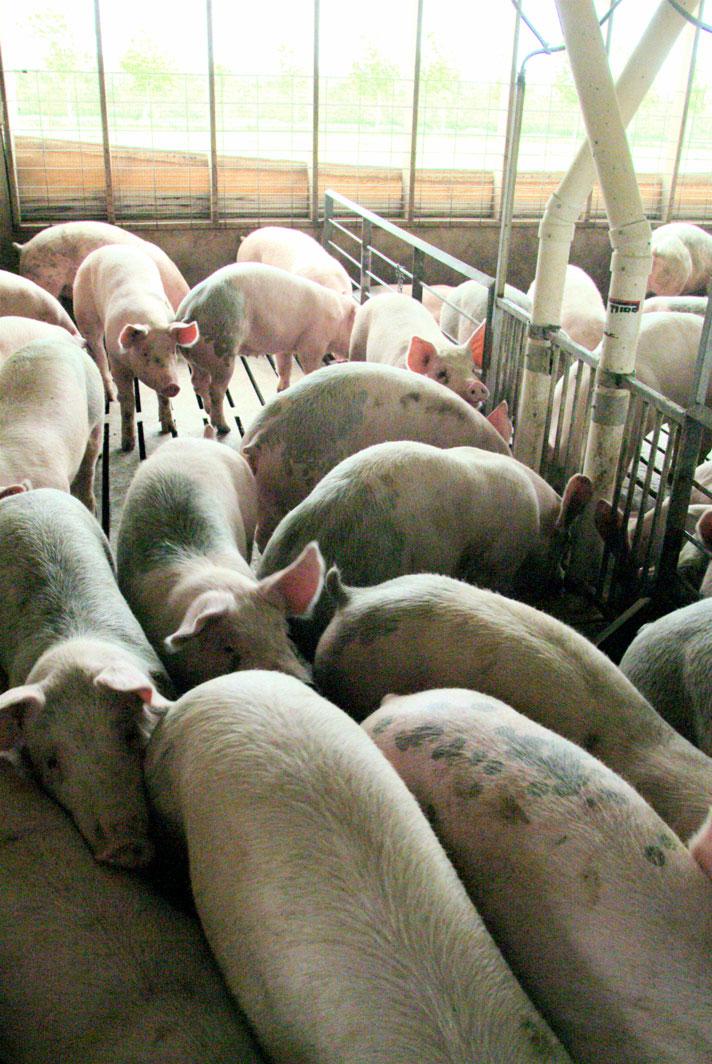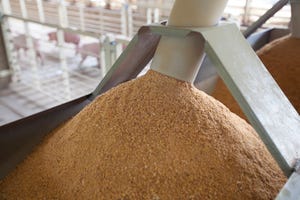December 27, 2011

USDA’s December Hogs and Pigs report contained estimates that were very much in line with analysts’ expectations. The report is considered neutral by most observers. We agree with that assessment through summer, but the report suggests that Q4-2012 supplies may be lower than we had previously anticipated.
The report was released while Chicago Mercantile Exchange (CME) Group Lean Hogs trading pits were still open on Friday and prices for most contracts gained 40 to 60 cents/cwt. That suggests the numbers were just a bit lower than was “in the market” on Friday. This marks the first time we can remember that a Hogs and Pigs report was released while trading pits were still open, although the situation is not very different from the last few years when report releases came while electronic markets were still trading. The advent of electronic markets and the volume they carry may have made after-the-market releases a thing of the past.
The key numbers from the report appear in Figure 1. Some observations include:
· There were no big shocks. The numbers were very close to pre-report estimates and the small responses of electronic markets on Friday suggest that these numbers were substantially already “in the market.”
· The “checkable” numbers make sense. The 180 lb.-and-over inventory was 0.4% lower than last year. That figure matches closely with December 2011 slaughter through Friday. So far this month, 17 weekdays and four Saturdays vs. the same period last year says slaughter is down only 0.3%. In addition, the percentage changes for Sept.-Nov. farrowings, pigs/litter and pig crop all fit together very well. My conclusion is that the report is internally consistent and consistent with known data.
· The breeding herd of 5.803 million head was only 0.4% larger than last year. That is just half the growth rate expected by analysts and represents just 25,000 more sows in U.S. herds than there were on Sept. 1. Reactions to profits have remained modest even since the size of the corn crop has been known and most concerns of sky-high feed prices were allayed. Producers are being very careful about expanding. They know there is very little margin for error from a profit standpoint.
· The market herd was 1.7% larger than last year with all of the increase coming in pigs weighing 179 lb. or less. Those pigs will begin reaching slaughter in January and will lead to higher 2012 weekly totals through March.
· Dec.-Feb. farrowing intentions fit the breeding herd very well and suggest higher hog numbers through August 2012.
· March-May intentions, though, are significantly lower than were expected by analysts and are somewhat lower than a 100.4% breeding herd would suggest. If this farrowing level and the 1.1% litter size growth rate hold, Q4-2012 slaughter will be almost exactly the level of this year (Figure 2). That is very good given the level of U.S. slaughter capacity, which has been tested on several occasions this fall.
· Finally, the average number of pigs saved per litter, 10.02, was the highest on record for the Sept.-Nov. quarter. The 1.1% Sept.-Nov. year-on-year growth rate leaves the average litter size growth since March 2008 at 1.91% per year.
The key take-away from this report is that producers continue to react to profits at a very slow pace. One reason is that the outlook for profits is anything but stable. Futures markets have been all over the map – from losses of $15/head for the next 12 months back in August, to profits of nearly $20/head for 2012, projected in October, to profits of just under $10/head for 2012, as of last week. That kind of volatility engenders confidence for neither producers nor their lenders.
Summary Table Data Unavailable
Much of the weekly data for our Production and Price Summary tables was unavailable for last week. We believe most will be available this week, so look for the tables in next week’s Weekly Preview.
Happy New Year
Wishing everyone a safe and happy New Year’s holiday!
Steve R. Meyer, Ph.D.
Paragon Economics, Inc.
e-mail: [email protected]
You May Also Like



